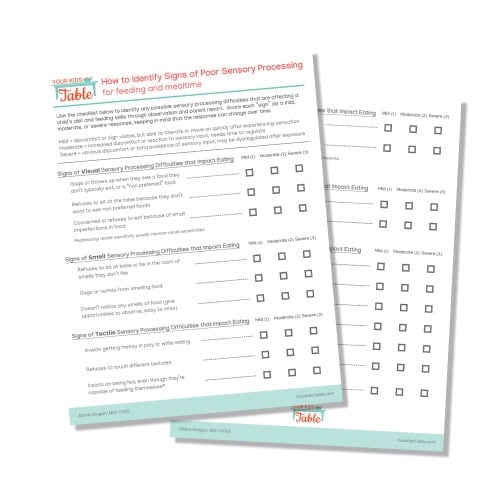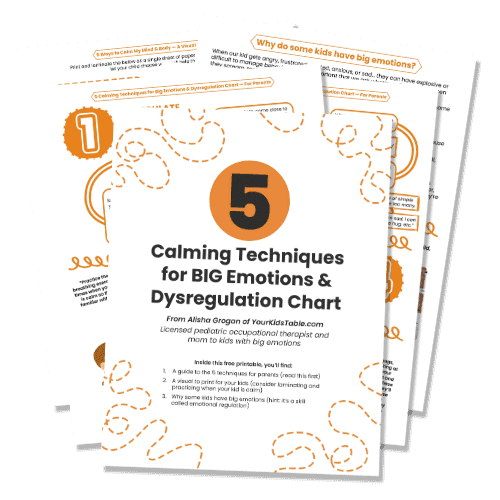Learn powerful sensory strategies to support and overcome
your child’s sensory needs so they can RISE to their full potential.
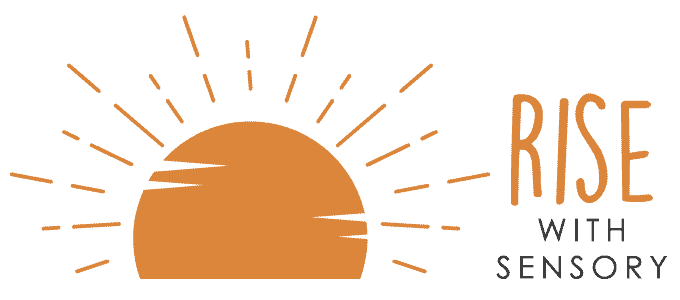
The Struggles Your Child Has
Are NOT Your Fault

Do You Ever Feel Like…
Your child isn’t like the other kids.
Something is a little different and you’re not sure how to help them.
You’re totally overwhelmed and exhausted by your child crying and melting down.
You don’t know what you’re supposed to be doing differently.
Your child is wild, active, and never stops.
They struggle to follow directions, but something tells you it’s more than them just being “bad”.
Other people don’t understand your child.
They treat them unfairly because of the way they act.
Your child is very sensitive to textures, lights, sounds, and/or movement.
You try to help them, but nothing seems to work.
If you answered yes to any of the above, then your child may have difficulty with sensory processing.
Sensory is Often the Hidden Reason Your Child is Labeled as Bad, Weird, Quirky, Hyper, or Sensitive…
Likely, nobody told you about sensory processing when you became a parent, yet it is the absolute foundation to your child’s development. It affects every and all aspects of your child’s life.
That’s why when a child’s sensory processing isn’t working well, it can cause you and them a lot of stress, frustration, or missed opportunities from participating fully in their childhood.
And, your child could specifically struggle with any of the following:
 Learning
Learning
 Paying Attention
Paying Attention
 Following Directions
Following Directions
 Sitting Still
Sitting Still
 Overly Sensitive to Smells
Overly Sensitive to Smells
 Playing
Playing
 Socializing
Socializing
 Communicating
Communicating
 Staying Alert and Being Tired, even though they slept enough
Staying Alert and Being Tired, even though they slept enough
 Constantly Seeking Out Movement by running, climbing, and crashing.
Constantly Seeking Out Movement by running, climbing, and crashing.
And, that’s just to name a few. Unfortunately, since most people don’t know about sensory processing, kids with sensory processing difficulties get labeled as bad, weird, quirky, hyper, or sensitive.
But, that’s not the whole picture, not even close.
The Truth Is Many Kids Are Misunderstood
They’re misunderstood because nobody is seeing the hidden reason for the frustrating, exhausting, or confusing things they do.
But, once you know that your child’s brain isn’t processing sensations well, that it’s all because of their sensory processing, you can understand AND help your child actually improve any sensory issues they have.
YOU can improve your kid’s sensory issues with Sensory Strategies!!!
It’s true. Sensory strategies are specific tools and techniques that do two things:
 Sensory strategies help your child manage their sensory issues so that they can cope, adjust, and participate in the various activities of their life.
Sensory strategies help your child manage their sensory issues so that they can cope, adjust, and participate in the various activities of their life.
 Sensory strategies, when used well, actually can rewire the brain to improve sensory processing!
Sensory strategies, when used well, actually can rewire the brain to improve sensory processing!

Sensory Strategies are the Missing Solution, Unless They’re Used Wrong…
And, many people do use sensory strategies the wrong way, even though that’s not their intention. They’re often trying to DIY sensory strategies from what they find from a Google search or heard from a friend. The problem with that is that you have to know which strategies to use and when.
Because kids have so many different sensory issues, the wrong sensory strategy for your child could actually make their sensory processing worse (gasp!) or be a total waste of time.
I know you don’t want that.
Unfortunately, when parents try to dig deeper and learn more about sensory processing, they often become overwhelmed. The little comprehensive information that’s out there is often complex and difficult to follow.
Using sensory strategies well is what you need to have your child overcome sensory challenges and RISE to their full potential.
I’ve been a pediatric occupational therapist for over 16 years and very early in my career, I learned the power that sensory strategies had to utterly change a child’s life. So many times it 100% is the missing link.
Because of that, I’ve made it my mission to simplify sensory for parents, and other professionals too, so that they can help their child rise to be everything they possibly can be without their sensory issues getting in the way.
That work began here in my hometown of Pittsburgh, PA where I served hundreds of families, and then expanded to thousands around the world through the Your Kid’s Table blog and online programs.
And now, we have a brand new program specifically designed to help kids with sensory processing difficulties…
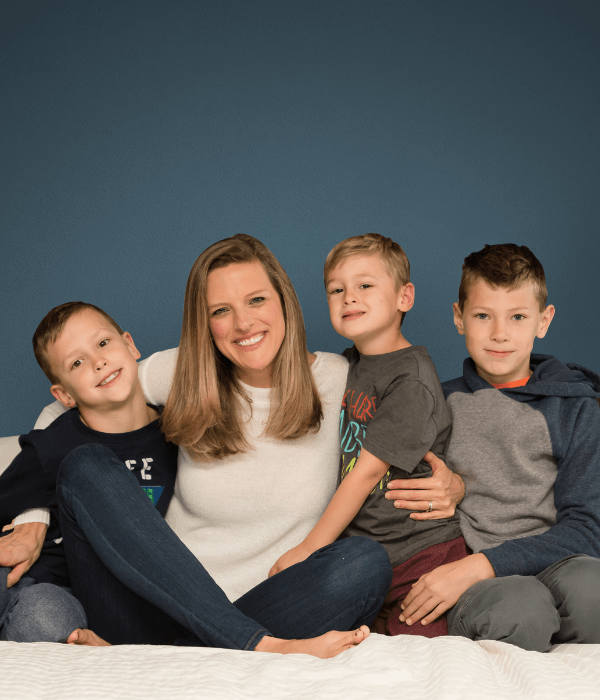
INTRODUCING
RISE with Sensory
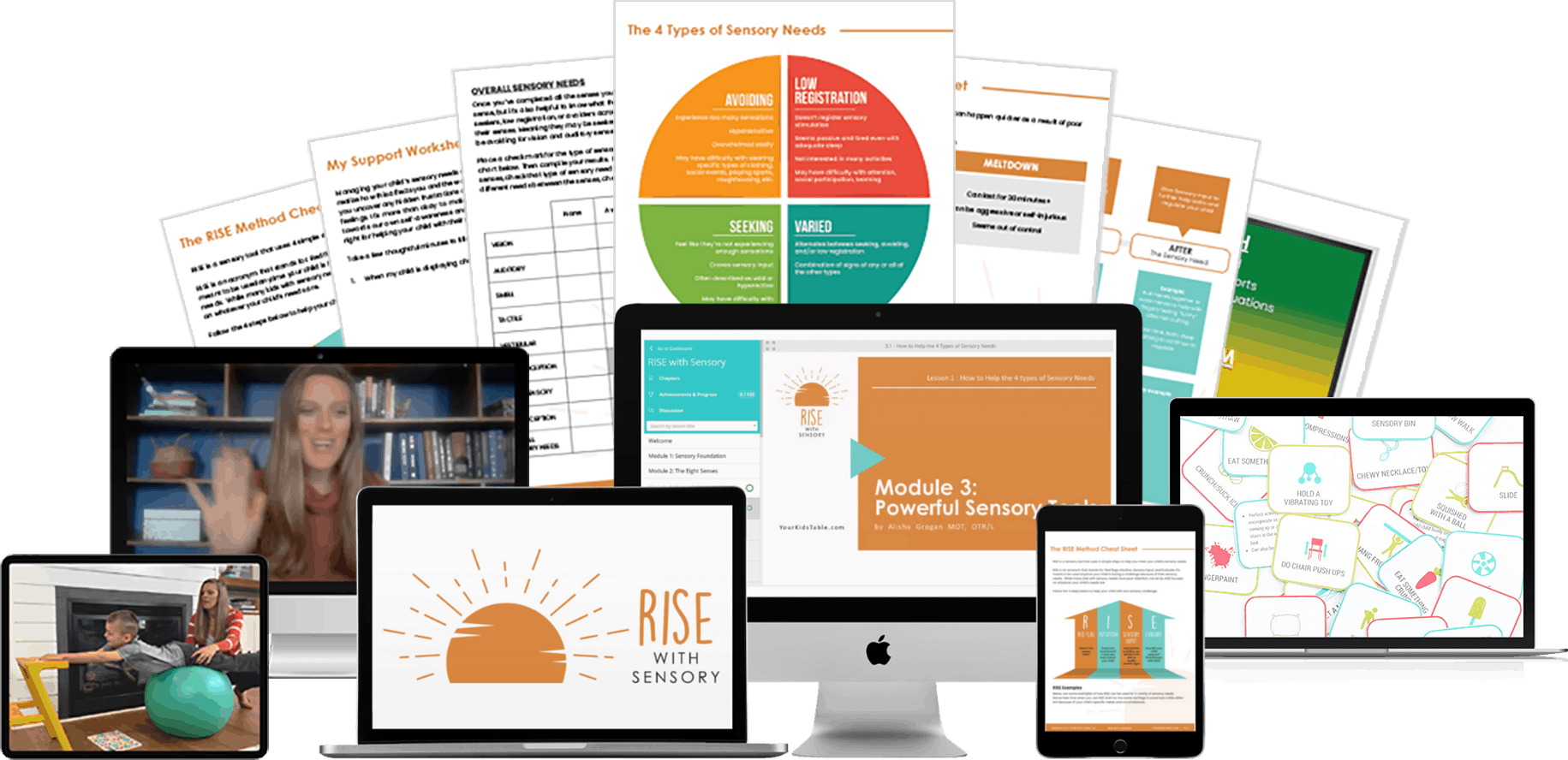
with Alisha Grogan, MOT, OTR/L
RISE with Sensory is an online program that teaches you the most powerful sensory strategies and how to use them easily in your home, without any overwhelm, so that your child is supported, understood, and able to truly RISE to their full potential.
The RISE with Sensory Program Includes:

Video Lessons

Written Lessons

Private FB Group with Daily Coaching

Slides + Printables + Worksheets
Amy
Christine Z.
Yaqeen

RISE with Sensory is for You…
If your child has any sensory issues that confuse, overwhelm, or stress you or your child in any way.
It doesn’t matter if your child’s sensory issues are big or specific. It doesn’t matter if your child is 2 or 10. And, it doesn’t matter if sensory issues are the only thing your child struggles with or they have a diagnosis of SPD, ADHD, or Autism. Sensory processing difficulties affect a wide range of kids, and this program will show you how to hone in on your child’s unique needs and work through them simply, step-by-step.
5 Sensory Learning Modules
Including…
Module 1: Sensory Foundations
Most parents know little to nothing about sensory processing, yet that’s exactly what’s causing the challenges your child is facing. Learning the foundations of sensory will give you the solid footing you need to use sensory strategies well with your child.
Highlights from Module 1 Lessons:
- How sensory issues can actually be improved in your child
- 4 different types of sensory needs kids have
- What to do when your child is having a meltdown
Module 2: The 8 Senses
Didn’t you learn about just 5 senses in kindergarten? Well, there’s 3 more, and they have A LOT to do with sensory processing. Knowing how each of these senses works, and what types of sensory red flags you see for any or all of the senses, let’s you know exactly where the sensory issues are coming from.
Highlights from Module 2 Lessons:
- 3 powerhouse senses that affect every aspect of your child’s development
- All about oral sensory processing and what it has to do with your child’s picky eating
- What interoception is and why it’s the explanation to your child’s big emotions, poor appetite, difficulty going to the bathroom, and more
Module 3: Powerful Sensory Tools
When you get to Module 3, you’ll have a solid foundation of finally understanding the confusing, frustrating, and quirky behaviors your child has. Now you need to know how to support and overcome them. You’ll begin to learn how to do that in this module as you learn 3 different sensory strategies.
Highlights from Module 3 Lessons:
- What sensory input is and when to use it
- The heart of the whole program, the RISE strategy, a step-by-step tool to help your child with any sensory need
- How and when to use Sensory Integration activities to improve your child’s sensory processing
Module 4: Sensory Input, Activities and Strategies
Parents often find examples of sensory activities online, but they don’t know why they’re using them or when they should use them. The truth is not all sensory activities are helpful and some can even make your child’s sensory processing worse, but in this module, you’ll learn dozens of different activities and ways to give your child calming sensations that meet their specific needs.
Highlights from Module 4 Lessons:
- How to desensitize your child that can’t stand touching different textures, smelling smells, or participating in anything that involves movement
- How to increase the awareness of your child that seems to have no energy and is totally uninterested in learning, playing, or being active
- How to calm and focus your active wild child so they can learn, sleep, and follow directions
Module 5: Sensory by Design
Once you learn all of the ways to give your child sensory activities and strategies, now you have to apply it to real life. What does that look like in your home? What about at school or daycare, when you’re not there? Or, how about when you’re at a birthday party or on a Target run? Learn how to easily use sensory strategies in all of these environments!
Highlights from Module 5 Lessons:
- Teach your child to advocate for their sensory needs, when you can’t be with them
- How to talk to your child’s teacher about their sensory needs
- What sensory tools to have on hand when you’re in public
RISE student
4 Awesome Bonuses
The 5 main modules of RISE with Sensory will give you what you need to support and overcome your child’s sensory needs. But, that’s only the beginning. When you join RISE with Sensory, you get 4 incredible bonuses to make helping your child even easier.
Bonus #1: Demo Video Vault
(valued at $50)
Learn insider OT sensory activities with full detailed demonstrations so you can easily replicate them in your home!
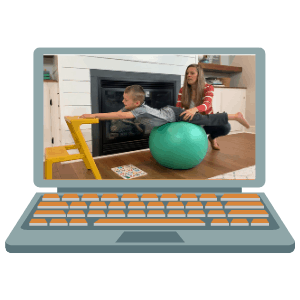
Bonus #2: Monthly Live Q/A’s with Alisha (valued at $200)
In addition to our fb group where you can ask questions at any time, you can also leave questions in advance or join me live for a special Q and A session once a month inside our private student only fb group.

Bonus #3: 60 Printable Sensory Cards (valued at $10)
In Module 3, you’ll learn how and when to use sensory cards. Although you can make your own, we’re including a custom digital set of 60 different cards with sensory activities you can print and use at any time.
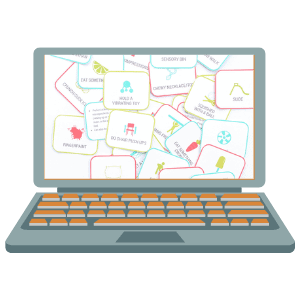
Bonus #4: 20 Sensory Routine Templates (valued at $20)
Specific tricks and simple sensory activities to use at challenging times of the day from bedtime to going shopping.
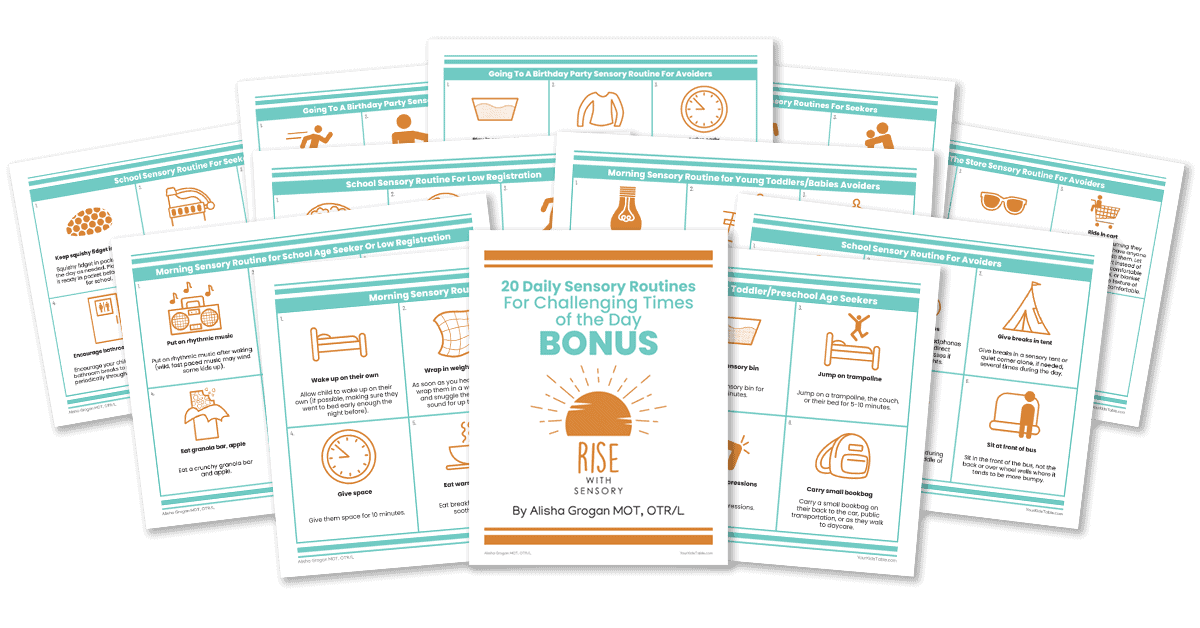
Carrie Y.
Sarah L.
Marion C.
I know RISE with Sensory works, but I want you to feel confident in that too, so I welcome you to take 30 days to learn the strategies and begin to implement them. If, after those 30 days, you aren’t seeing any results, then show me the strategies you’ve implemented and the homework you’ve completed. I’ll gladly give you a full refund.
When you add it all up, Joining RISE with Sensory is Worth Over 950$
But, that’s not even close to what your investment will be when you join…
RISE with Sensory
- 20+ Lessons Via Text or Video with Printable Slides
- 15+ Downloadable Worksheets, Cheat Sheets, & Checklists
- 100% Online with Guaranteed 1 Year Access
- 60 Printable Sensory Cards
- Demonstration Videos Vault
- Live Group Monthly Q/A Sessions with Alisha
- Save 15% more with this one time payment
- 20 Sensory Routines Templates
- Student-only access to private FB group
Payment Plan Option
- All of the features of the RISE with Sensory class, but available in 4 monthly payments of 69$.
Shannon
Alexis
Is RISE with Sensory Enough for My Kids Sensory Needs…
Do they need occupational therapy?
While this program does not replace traditional sensory integration therapy, for many children, it prevents or greatly reduces their time in therapy.
With therapy costs averaging about 150$ per hour, many insurance companies will cover only a few sessions or none, even if your child has Sensory Processing Disorder because it isn’t recognized as a diagnosis yet.
However, if your child is already in OT, RISE with Sensory is an excellent addition to their therapy because YOU will learn how to help them at home, day in and day out of their life.

Frequently Asked Questions

How long does it take to complete the program?
What if I don't see results?
How long do I have access to the program?
What age child is this program for?
I'm a professional. Can I take this program for continuing education credits?
This course is appropriate for occupational therapists, speech and language pathologists, developmental therapists, physical therapists, teachers, social workers, psychologists, pediatricians, and any other professional that works with children or families from ages 1-12 that experience difficulties with sensory processing.
This is an introductory course and no prerequisites are required. This class Is AOTA approved for 7 hours (.7 CEU), All lessons must be completed and quizzes must score 80% or higher to complete the course with a certificate.
Learning Objectives:
- Understand what sensory needs are within the everyday lives of children
- Identify what the 4 types of sensory modulation needs are
- Define Self-Regulation
- Summarize the difference between a Tantrum and a Meltdown
- Recall the 8 senses that children utilize and process throughout their daily activities
- Identify the types of sensory needs that can be present within each sense
- Describe signs or red flags that kids display for each type of sensory need in each of the 8 senses
- Recall the 2 sensory rules to follow when presenting sensory activities to children
- Describe when it is appropriate to utilize sensory input
- Recall the 4 steps of utilizing RISE
- Identify when you can utilize RISE to help kids with sensory needs
- Give examples of sensory activities that are appropriate to utilize for specific sensory needs according to the sense that need is related to
- Describe 2 ways to help children that overprocess or avoid various sensory input
- List specific sensory strategies for children with low registration sensory needs
- Recall the 5 strategies used to work on Interoception awareness
- Describe ways to teach children about their arousal level and how to change it to match the activity they’re participating in
- Identify sensory strategies to utilize within the home, school/daycare and public settings
What if my child has Autism, ADHD, or another diagnosis? What if they don’t? Will this program help them?
Do I need to buy any expensive sensory tools or toys?
RISE student
Tracy
Natalie
RISE with Sensory is an AOTA certified course
The American Occupational Therapy Association has certified this course for 7continuing education hours and once you complete all the lessons and take a short quiz at the end of each module you’ll have your own CEU certificate!
While this program was created with parents in mind, professionals will also benefit from these fundamental sensory strategies whether they’re a therapist working one on one with a child or a teacher working with a group of children. All printables and worksheets can be shared with clients on your caseload or students in your classroom.

Your Kid’s Table is an AOTA Approved Provider of professional development. Course Approval ID# 01700. This Distant Learning-Independent course is offered at .7 CEU Beginner Level OT Service Delivery. AOTA does not endorse specific course content, products, or clinical procedures.
What Happens If You Don’t Learn How to Use Sensory Strategies Well?

Unfortunately, I see this happen all the time. Parents have no idea that the meltdown, wild behavior, or sensitivities have anything to do with sensory processing.
And, it breaks my heart because I know the missing link that can change everything.
But, knowing that sensory is the cause is only the first step. There’s so much more, and all too often, parents get overwhelmed and just return to the grind and frustration because they don’t know how to help their child with their sensory needs.
That struggle is why I’m here. I know there’s another way through learning those powerful, but do-able, sensory strategies so that your child can truly rise to their full potential.
And, so that your stress and worry is greatly reduced, if not totally eliminated!
I can’t wait to meet you inside the RISE with Sensory program!
Amy
RISE with Sensory
- 20+ Lessons Via Text or Video with Printable Slides
- 15+ Downloadable Worksheets, Cheat Sheets, & Checklists
- 100% Online with Guaranteed 1 Year Access
- 60 Printable Sensory Cards
- Demonstration Videos Vault
- Live Group Monthly Q/A Sessions with Alisha
- Save 15% more with this one time payment
- 20 Sensory Routines Templates
- Student-only access to private FB group
Payment Plan Option
- All of the features of the RISE with Sensory class, but available in 4 monthly payments of 69$.
Disclaimer: Every effort has been made to accurately portray our program and the assistance it provides. However, there is no guarantee that this course will improve your child’s sensory issues. Your results will be determined by a number of factors over which we have no control, such as your particular situation, your child’s sensory needs, your efforts, etc. Subject to our refund policy, we provide content without any express or implied warranties.
Copyright © 2012 – 2024 Your Kids Table | Full Disclaimer | Privacy Policy


